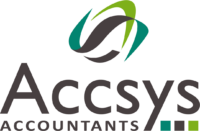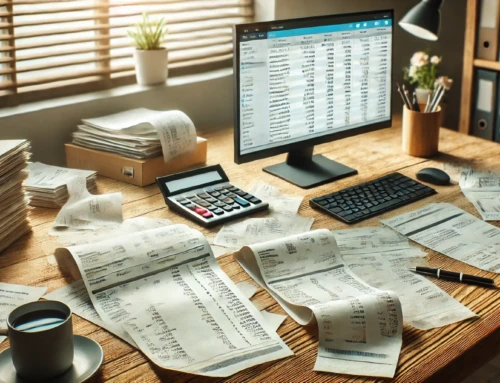
Most business owners immediately think of the bank or loans when they’re short of cash. But there are many more resources you can tap before you ask for that expensive overdraft or an overdraft extension. You can often free up funds from within your business by re-examining your business systems, and these funds might in themselves be sufficient for your immediate needs.
To free up funds from within your business, you could look closely at the following.
Assets
Your assets include debtors, stock, pre-paid expenses, vehicles, plant and equipment, fittings and property. Each of these is a possible source of funds.
Debtors
Are you letting some customers have the free use of your money for months? This is a common occurrence in small businesses where the owner is so busy getting the business off the ground, products out the door or services completed that they don’t pay enough attention to basic business procedures. Many customers will take advantage of this ‘free money’. But your business is not to be a free bank.
Here’s how you fix the problem.
- Qualify customers using credit checks before extending credit to them.
- Get invoices out promptly. Become efficient at getting invoices out early – after all, this is your future cash flow.
- Send the invoice with the goods, and date the invoice from the day the service was completed rather than following the standard ‘last day of the month’ date for invoices. The earlier the invoice date, the earlier your chances of getting paid.
- Consider changing the terms for some of your customers or new customers. Can you reduce the payment terms to 7 days or 14 days from the date of invoice?
- Follow up promptly when invoices aren’t paid by the due date. Be polite but firm. If you haven’t the time to do this yourself, then appoint someone to do it for you.
- Establish the average age of your Accounts Receivable and set yourself the goal of reducing this age by a set target every month.
- Consider offering a discount for prompt payment. Discounts aren’t always a good option for low-margin businesses but can be an option for high-margin operations. You have to work out whether the use of money gained earlier is worth the discount you’re offering.
- Consider using a service such as Gocardless.com to set up a Direct Debit for each customer so that you can get paid on the due date of invoices.
- If you are in the construction industry, then consider using https://www.top-service.co.uk/ to assess your customers and chase debts.
Stock
Do you have excessive capital tied up in stock? This can occur in two ways:
- Carrying high levels of items that you could obtain from suppliers at short notice.
- Having too many slow-moving items (and too few fast-moving items).
You need to regularly review your stock levels, your stock turnover rates and your purchasing policies. Can you free up money by reducing stock? What about moving out of the slow-moving lines or having a quick sale of the slow-moving stock? It might pay you to reduce some items quite heavily to get some money in quickly.
Can you approach suppliers to take back some excessive stock you may have ordered? They might help you out of a temporary tight corner as a goodwill gesture if you explain you have a temporary cash-flow crisis but that you do wish to build a long-term relationship with them.
If you need additional funds to purchase more stock, make sure you’re replacing the slow-moving stock with the faster selling lines.
Pre-paid expenses
This is another area you could look at. These pre-paid expenses often relate to services. For example, you might have always paid your insurance bill for the year all in one hit, but could you instead arrange to pay small monthly amounts? There might be an additional cost for doing this, but you must weigh the extra cost against the advantages of 12 small payments that your cash flow can comfortably handle versus one large annual payment. For instance, we only charge for our Accountancy Services monthly which avoids the large annual bill.
The same goes for your electricity bills. Ask if you can average out your electricity bills, instead of paying relatively small bills in summer and being hit by big ones in winter. Watch out for automatic payments, too (telephone and electricity bills, etc.). These can often throw out your cash flow projections because you’ve forgotten to include them in your cash flow forecasts.
Fixed assets
Fixed assets can often be the source of a significant amount of cash. Do you really put all your assets to full use? You might be able to sell off little-used assets and hire suitable replacements when you require them. You might be able to sell vehicles and lease others instead.
Suppliers
Finally, consider your suppliers as a possible source of funds. Ask for extended payment terms to give you the opportunity to sell the goods first before you have to pay. If the supplier won’t budge, try splitting the order in two and offer to pay normal credit terms (30 days) on one half of the order and 90 days on the other half. Your suppliers will be more likely to agree to this kind of arrangement if you’ve paid them promptly in the past.
- If you supply goods over a period of time or if you’re a service business, ask if you can invoice for progress payments. This is a common method of ensuring you get some cash flow during a project, instead of waiting until the end of a project or delivery period to invoice, and then waiting at least another 30 days for payment. There’s another benefit here too. If the customer turns out to be dodgy, you’ll discover this early on instead of at the end, and you can cut your losses before they mount up and perhaps drag your business down. This tactic is suitable for tradespeople subcontracting to a developer.
Next steps
- Identify exactly how much additional cash you’ll need – this is especially important if you decide you need additional finance from a lender.
- Seek professional help from an accountant, business mentor, or your bank manager.
- Reduce your expenses and tighten your credit policies based on the steps above.
- Research additional options for increasing your cash position, from low-interest bank loans and overdraft facilities to equity-dependent assistance.
The importance of cash flow forecasts
A Cash flow forecast is used to predict your business’s future financial position for the period ahead, from three months to a year in advance. Your forecast allows you to see what money you expect to be paid into the business and the amount you’ll need to payout. It’s a useful tool to help you manage your business more effectively.
If you are having cash flow issues, a cash forecast is essential – if you are a client of Accsys Accountants speak to your Client Manager, they are more than happy to help.






